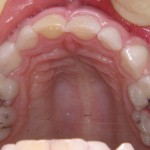
Pulpotomy which consists of the removal of the coronal inflamed pulp leaving the vital radicular pulp intact within the canals is a common procedure in primary teeth. However, in cases of irreversibly inflamed and necrotic radicular canals, a successful pulpotomy cannot be achieved, and pulpectomy is indicated. A range of difference intracanal irrigants have been proposed for use in primary teeth. These include NaOCl, chlorhexidine gluconate, ethylene diamine tetracetic acid (EDTA), citric acid, MTAD, hydrogen peroxide, and others.
The aim of this review was to assess the efficacy of intracanal irrigants employed during pulpectomy of primary teeth.
Methods
Searches were conducted in the Medline, Embase, Cochrane Library, Google Scholar, SCOPUS Web of Science, ScienceDirect, EBSCOhost, Wiley Online Library, OVID, Springer, Latin Index, and SCIELO databases. This was supplemented by heand searches of the Journal of Clinical Pediatric Dentistry (formerly known as Journal of Pedodontics); Pediatric Dentistry; Journal of Dentistry for Children; International Journal of Paediatric Dentistry; International Journal of Clinical Pediatric Dentistry; European Archives of Paediatric Dentistry; Pediatric Dental Journal, and European Journal of Paediatric Dentistry.
Articles reporting clinical, radiographic, or microbiological results with irrigant solutions in primary pulpectomies as the primary end point were considered. Two reviewers independently selected studies and abstracted data. Study quality was assessed using a composite system based on Grading of Recommendations Assessment, Development, and Evaluation (GRADE) and the Oxford Centre for Evidence-Based Medicine (OCEBM) criteria,
Results
- 7 randomised controlled trials were included.
- Follow up period was immediate in 5 studies, 3 days in one study and > 1 months in one study.
- 3 studies compared the 2% chlorhexidine and saline solutions
- 2 studies assessed the efficacy of MTAD compared with 2.5/1% NaOCl.
- The efficacy of NaOCl as a control irrigant was compared with oxidative potential water (OPW), and with MTA
- There was marked heterogeneity between the studies so a narrative summary of the findings was presented.
Conclusions
The authors concluded
More studies are required with adequate quality, as well as a full-result report, including summary measurements of both response variables and effect size, to determine the most effective irrigant agents for use in pulpectomies.
Comments
The authors of this review have conducted a wide-ranging search in a wide range of databases. Only a few trials involving small numbers of patents could be included. Heterogeneity in the study design meant that direct comparisons of the available studies was difficult. The review does highlight that there is little evidence available on irrigation agents for pulpectomy in primary teeth. It also highlights the limited quality of the currently available studies and the need for high quality appropriate sized studies developed that follow the SPIRIT and CONSORT guidelines.
Links
Primary paper
Pozos-Guillen A, Garcia-Flores A, Esparza-Villalpando V, Garrocho-Rangel A. Intracanal irrigants for pulpectomy in primary teeth: a systematic review and meta-analysis. Int J Paediatr Dent. 2016 Feb 22. doi: 10.1111/ipd.12228. [Epub ahead of print] Review. PubMed PMID: 26898157.
Other references
Dental Elf – 15th Aug 2015 – Pulpectomy in primary molars: little difference with 3 filing materials
Dental Elf – 14th Aug 2015 – Pulp treatments for primary molars

Irrigants for pulpectomy in primary teeth- little evidence available https://t.co/4yTA7U53V2
Little evidence available for pulpectomy irrigants in primary teeth https://t.co/4yTA7U53V2
Pulpectomy irrigants in primary teeth-little evidence available https://t.co/4yTA7U53V2
Limited evidence available for pulpectomy irrigants in primary teeth https://t.co/4yTA7U53V2
Don’t miss- Irrigants for pulpectomy in primary teeth-little evidence available https://t.co/4yTA7U53V2